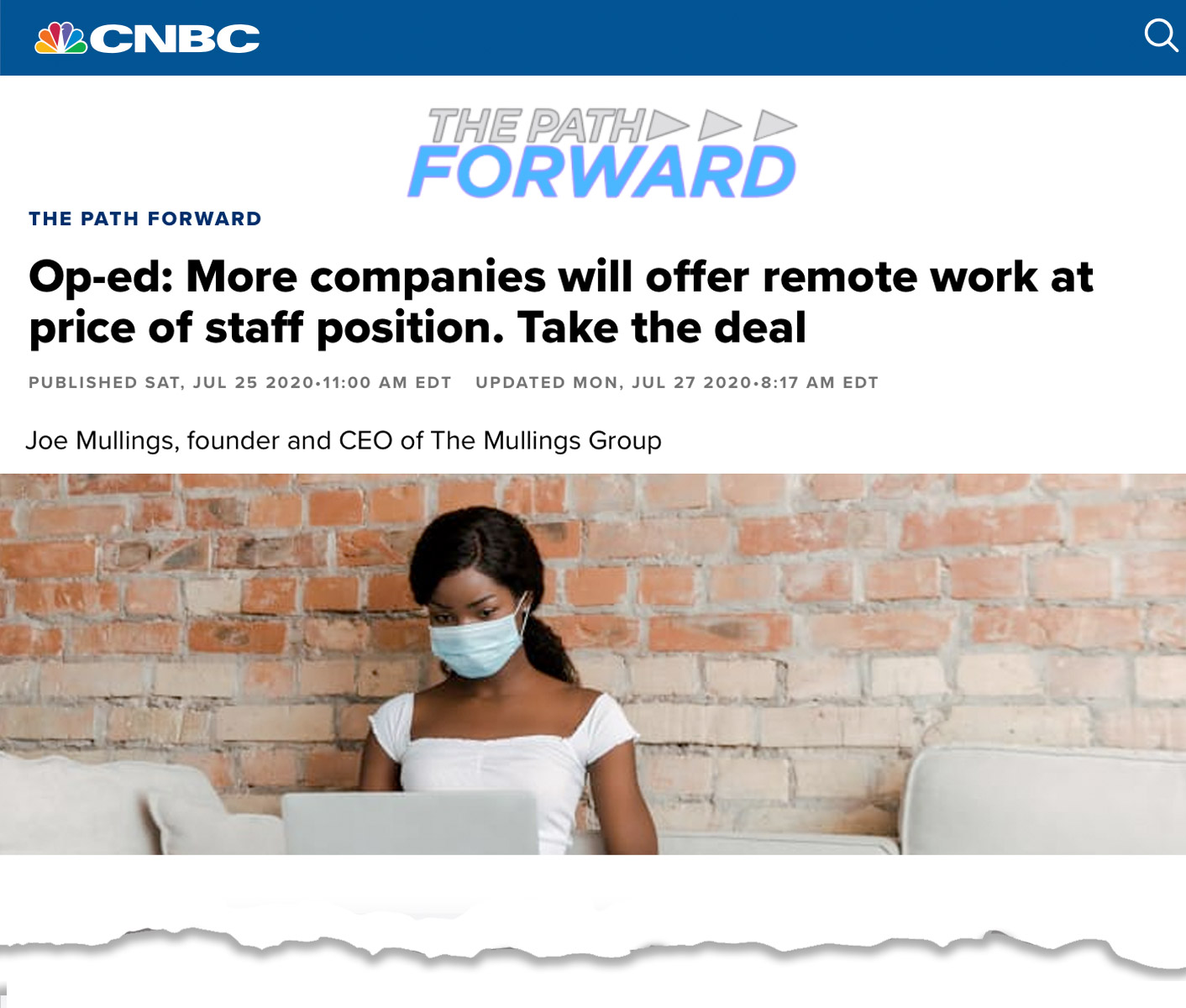And one more thing …
I recently wrote an op-ed for CNBC (“More companies will offer remote work at price of staff position. Take the deal”) discussing the rapidly evolving workforce and where the Interim Economy may likely go. The piece went viral, and I received a fair number of outright hostile messages from some readers.
In response to these readers’ concerns, first let me say that the Interim Economy is not an emerging category of employment designed by corporations to take advantage of their workers. Will there be some companies that will take advantage of workers’ current vulnerabilities, exacerbated by the pandemic? Yes, of course. Any behavior or practice taken to an extreme usually spells trouble.
In other words, any distribution curve always has its outliers on the fringes. Take, for example, equality of opportunity. It’s critically important to any society but a government-mandated equality of outcomes for all, taken to an extreme, can lead to Marxism. Conversely, law and orderliness are critical for a functioning society. However, law and order taken to an extreme has led to some of the most brutal regimes and crimes against humanity in the 20th century.
Critics will continually point to corporations taking advantage of the workforce, a result of their purely profit driven behaviors. The “interim“ or contract workforce certainly facilitates organizations to have expenses fall on their balance sheets in a different way than full time employees. However, it doesn’t allow for benefits mainly enjoyed now by full-time salaried employees, such as paid time-off, 401(k) and healthcare programs. However, in the Interim Economy, the responsibility and management of these benefits becomes the shared responsibility of the company and the worker.
There are also unique benefits to the interim employee, including flexibility of work hours and the location of their work. This allows for a degree of personal freedom and lifestyle choices simply not available with most conventional full-time employment. It also allows for multiple contract-employer relationships, which can add a level of security to earnings, as the worker no longer must depend on only one source of income. Interim employment also potentially allows a broader choice of roles and pay rates, as a contract relationship sets up for remote employer relationships at a much higher rate than full time employment.
The current rate of acceleration of technology in all market categories is creating a skills gap and an undersupply of qualified workers. In turn, that sets up a supply-demand dynamic that translates to an opportunity for those willing to upskill or career-jump. Corporations like Google are providing thousands of scholarships for data analytics, UI/UX and project management that will result in opportunities to be hired for interim roles. In fact, Google and many other tech companies already have more than 50% of their workforce hired as interim/contractors, and the demand will continue to accelerate into the future. Anytime there is a breakaway rate of new technology, classic four-year educations cannot keep up with the requisite knowledge required to fill the demand for skilled workers.
The services sector, which includes financial services, media, transportation and technology, represents nearly 70% of the U.S.’s GDP and is growing. The Interim Economy will provide an on-ramp to individuals who are transitioning into new careers and upskilled roles, as these sectors rapidly transition from tech platform to tech platform.
The bottom line for workers is that the unemployed or underemployed will need to self-learn. The days are over when high school and college graduates could expect their degrees to sustain them over the four decades of their careers. That ship sailed nearly 80 years ago. The borderless, rapidly evolving tech-driven world we live in today will reward those who help themselves.







